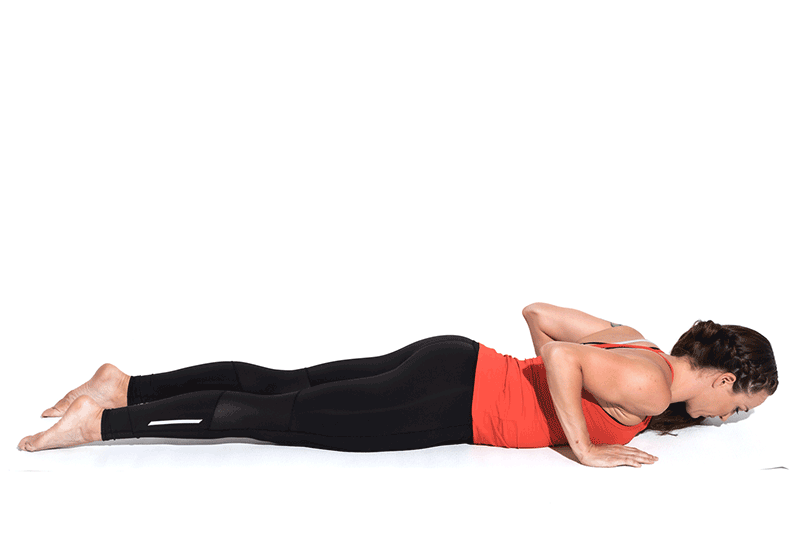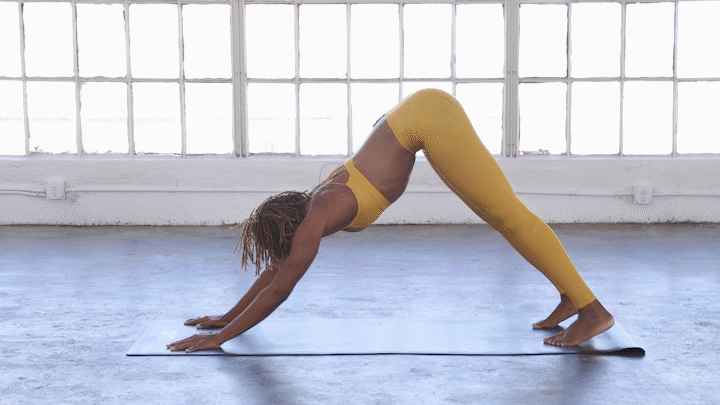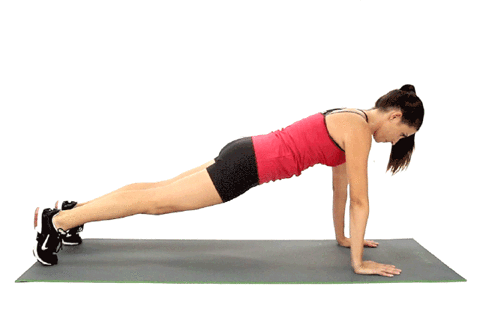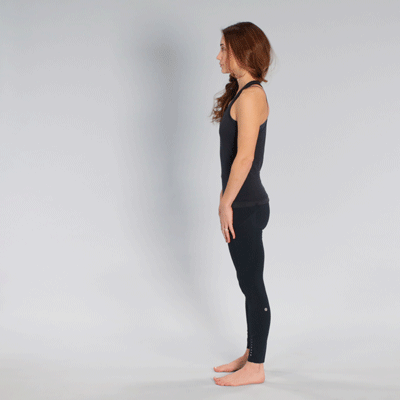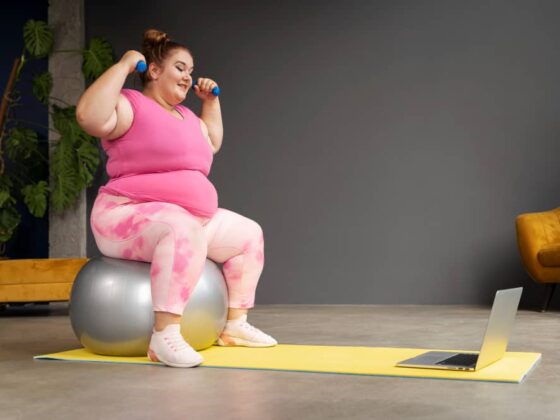Hey there! This post may contain affiliate links. As an Amazon Associate, I earn a teensy commission from qualifying purchases when you buy through these links (at no additional cost to you). For more info, please check the full disclaimer.
According to Cornell Health, back pain is one of the most common medical problems, with an estimated 8 out of 10 people experiencing it at some point in their lives. It may cause you to spend most of your nights tossing and turning in bed or wake up with back pain. Thankfully, there are several ways to ease lower back issues, including beginner yoga for back pain poses to help you live a normal life.
Your back plays an essential role in stabilizing your entire body. For example, it helps you stay straight, supports your body weight, and allows you to perform many functions, including walking, sitting, and even sleeping properly.
Apart from this, it also houses important nerves that help control every movement in the body. In other words, our backs are the reason we can bend smoothly without falling over.
This clearly indicates the importance of our spine and how crucial it is to take care of it. However, despite the risks associated with improper back care, many people still fail to exercise proper spinal care!
In this blog, you will find out some of the best poses of beginner yoga for back pain that you can add to your morning yoga routine. These are easy and quick moves that are super gentle on the body and are guaranteed to provide relief.
What do you need to know about the spine?
Your spine is a combination of bones, muscles, tendons, and nerves. It is also composed of ligaments, discs, and joints to help keep everything in place.
The spine is divided into four main segments:
- Cervical segment: the neck
- Thoracic segment: the upper back
- Lumbar segment: the lower back
- Sacral segment: the pelvis
Typical back pain usually involves the lower back or the lumbar spine. This region is more prone to injury because it allows a more extensive range of motion and carries the most body weight.
The main muscle groups that account for lower back pain include:
- Extensors: they are attached to the back of the spine and help you stand as well as lift objects
- Flexors: they are attached to the front of the spine and allow flexing, bending, and arching of the lower back
- Obliques: they are attached to the sides of the spine and help you rotate
#yoga #yogawomen #womenshealth
What are the causes of back pain?
There are many reasons why you might develop back pain. At times, it may be because of an injury or accident. Other times, it can be because of poor posture while sitting on a chair during your desk job or study or while sleeping in bed.
Yes – even sleeping in the wrong position can mess up your spine alignment!
If you have osteoporosis or a disease that causes bone deterioration, it might also make you susceptible to back pain problems, reported a 2016 study published in the Journal of Pain Research.
Also, if the lower back pain won’t go away despite all therapeutic activities, even after trying different beginner yoga for back pain poses, then you might have arthritis.

Older people may also develop persistent back pain when they have a fall or accident. It is usually so painful and dangerous that it may lead to serious injuries resulting in a broken spine.
No matter the cause, it could result in short-term or long-term back pain problems. Knowing what type of issue you have can help you understand which beginner yoga for back pain sequence is more beneficial for you.
Read More: 15 Minute Beginner Morning Yoga Routine
What are the types of back pain?
Back pain is mainly classified as acute or chronic. Let’s go through what each type means and what it feels like.
- Acute back pain
Acute pain means that the pain has occurred suddenly. This pain lasts for a short while (four to six weeks) and is usually treatable.
One of the most common causes of acute back pain is muscle or ligament strain. You can strain your muscles by twisting them or pulling a tendon. This mainly occurs as a result of repeated heavy lifting or playing sports without practicing proper technique.
Another reason you may develop acute back pain is due to a sudden force put on the spine, such as by a fall or a twist.
What does it feel like?
- Located in one specific spot.
- Sharp or a dull ache that keeps coming and going.
- May get worse with activities.
Luckily, this kind of pain goes away on its own. Although, you can accelerate the healing by doing various beginner yoga for back pain exercises.

- Chronic back pain
Chronic pain develops over three months. This kind of back pain mostly occurs due to a serious medical problem, which must be managed over time.
Problems like a fracture, a disk complication, arthritis, or scoliosis all contribute to chronic back pain.
What does it feel like?
- Not localized to one region.
- A dull ache spread all over your lower back, varying in intensity.
- A series of electric shocks in case of nerve injury.
Since chronic back pain is caused by more serious conditions, they require a different approach, such as drugs and physiotherapy for management. However, proper yoga stretches for the back can still help mitigate the pain.
Read More: 10 Best Bootcut Yoga Pants You Need Right Now
How effective is Yoga in treating Back Pain?
Yoga consists of a series of physical, mental, and spiritual practices to release body tension and bring the mind to ease. According to recent statistics, an estimated 36 million Americans practice yoga, out of which 72% are women.
In the last few decades, yoga obsession has gained momentum so much that it has become a part of people’s daily routines. That’s because it’s a gentle practice that anyone can follow from the comfort of their home. Unlike working out, you may not even need extra gear or special equipment to do daily yoga. Also, it doesn’t have any side effects or is expensive.
The best part is that there’s a lot of scientific evidence about the credibility of yoga in pain management.
A study conducted by researchers at PubMed in 2015 concluded that yoga appeared to be more effective in reducing the severity of back pain compared to usual standards of care (drugs, therapy, etc.).
Doctors at the American Osteopathic Association further state that besides lessening chronic pain, yoga also benefits other functions such as;
- Lowered blood pressure
- Improved sleep quality
- Weight reduction
- Improved energy and vitality
- Increased muscle strength and tone
Overall, yoga is a safe method that can be practiced by anyone. However, if you have a history of chronic back problems, we recommend you consult your doctor before attempting any of these poses.
Top 8 Beginner Yoga for Back Pain Moves
Let’s look at some of the best yoga poses for back pain relief. Most of these moves are highly diverse and will target all regions of the back. We have included yoga sequences for lower back pain, yoga for upper back pain, and yoga to treat back pain caused by exercise.
1. Cat-Cow
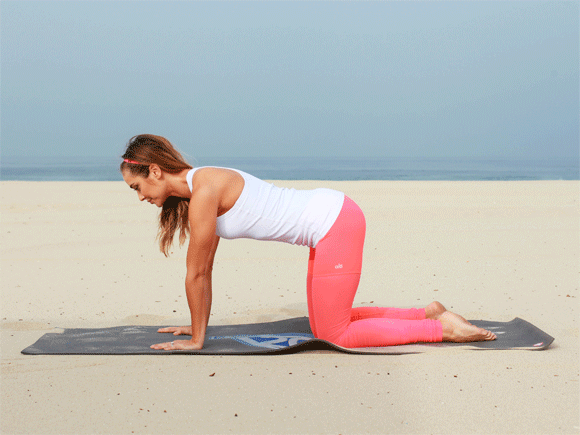
This easy-to-follow beginner yoga for back pain pose is excellent for treating lower back pain. It helps your spine by maximizing blood flow to the back, delivering essential nutrients, and promoting healing.
It also counts as a great yoga for upper back pain. The stretches may help with neck aches by easing the tension in the neck and torso muscles.
Method:
- Lay a yoga mat and get down on all four limbs.
- Ensure that your shoulders and knees are kept straight. They should be aligned with your elbows and hips, respectively.
- Inhale slowly and round your back while dropping your head to the floor
- Hold this position for 5 seconds and proceed to lift your head while arching your back.
- Continue for 1 to 2 mins.
🕉 Cat cow
🕉 Child’s pose
🕉 Cobra
🕉 Bridge
🕉 Downward dog
Check out this blog pose for more! 🧘♀️
#yoga #womenshealth #pain
2. Extended Triangle
This one is among the best beginner yoga for back pain exercises. The extended triangle helps alleviate tension in your back by stretching the spine along with the hips and groin.
Method:
- Start by placing your feet 4 ft apart.
- Face your right foot forwards and your left foot at an angle. They should form an “L” shape.
- Lift your arms upward, so they are parallel to the floor, and proceed to tilt by bringing your hand to your leg.
- While bending on one side, ensure that your arm is extending upwards towards the ceiling.
- Hold the pose and repeat.
3. Cobra
The cobra is a great beginner yoga pose for back pain because it’s simple and requires minimal effort. Practicing this pose will help relieve compression in the back, soothe leg pain, relieve upper back pain, and cure exercise-induced back pain.
Method:
- Lay on your stomach and place your hands in a push-up position on the floor.
- Keep your elbows inwards and press your hands against the floor.
- Lift your head and chest against the floor while keeping the knees and legs stuck to the floor.
- Hold the stretch for a few seconds, then release the pose.
4. Bridge
This popular yoga for back pain exercise helps improve dull aches by increasing the flexibility in the spine. It has been practiced by many gymnasts and has been proven helpful for headaches.
Method:
- Lay down on your back with your knees bent and heels drawn back to your hips.
- Lay your arms flat against the floor.
- Ensure your spine is parallel to the floor and lift your hips.
- Extend as far as possible while placing your fingers under your hips.
- Hold this position and release.
5. Downward Facing Dog
Downward-facing dog is an excellent beginner yoga for back pain pose for those who wish to help alleviate tension in their legs. It stretches out the hamstrings and calves and reduces lower back pain. It also helps strengthen the arms, shoulders, and upper back, relieving upper back pain.
Method:
- Start by kneeling on the floor with all fours on the ground.
- Slowly inhale and straighten your legs.
- Lift your hips to the ceiling and extend your arms. Your body should look like an inverted “V.”
- Keep the fingers wide and focus on keeping your legs straight.
- Direct the eyes toward your belly button.
- Hold it for 30 to 40 seconds. Release and repeat.
6. Plank
While the plank is mostly a core-based exercise, it has also proven to strengthen the lower back, hips, and abdomen. Planking is an integral part of many exercise routines because it helps sustain body balance.
An improved posture makes you much less susceptible to injuries and lower back pain. Moreover, its benefits in strengthening the abdominal muscles prove useful because the abdomen helps the spine support body weight.
Method:
- Lie down flat on the ground.
- Place elbows on the ground and extend your legs.
- Push your body upwards and hold the position for a minute.
- Release and repeat.
Read More: 7-minute Best Abs Workout for Women
7. Child’s Pose

The child’s pose helps gently stretch the spine and reduces anxiety and fatigue. This beginner yoga for back pain pose boosts the blood flow to the head, which ensures your brain receives more nourishment.
You can also benefit from the powerful stretch to mitigate persistent lower backaches. A lengthening stretch in the spine is great for releasing pent-up stress in the back. Additionally, the child’s pose is an excellent yoga for neck pain and aiding digestion.
Method:
- Kneel on the floor while placing your butt on your heels and touching your forehead to the ground.
- Separate your knees from each other but keep your toes touching.
- Now bend forward while leading your forehead to the ground.
- Lengthen your spine as you go forward and release the tension.
8. Standing Forward Fold
A standing forward fold or the “Uttanasana” produces a calming effect on the mind and releases stress in the neck and back. This perfect beginner yoga for lower back pain pose targets the hips, hamstrings, and calves, keeping them strong.
Besides stretching the legs, you’ll notice it aids the spine ad makes it more flexible. Many people also practice this pose to lower blood pressure and boost digestion.
Method:
- Stand with your feet hip-width apart, placing your weight on the heels of your feet.
- Bend over and bring your arms to the side or extend them beyond your head.
- Continue to hold the bend and repeat.
The Bottom Line
Spine instability is the biggest cause of lower back pain. If you do not care for your spine, the muscles and ligaments can weaken over time and contribute to persistent pain. This can be quite a nuisance as not only does it produce unnecessary discomfort but it also makes day-to-day tasks like lifting objects, bending, and twisting very difficult.
There are many ways to take care of your spine health. Apart from the obvious lifestyle changes, one of the best ways to prevent backaches is to add some beginner yoga for back pain poses to your routine.
References:
- http://tinyurl.com/impact-of-yoga-on-back-pain
- http://tinyurl.com/questions-about-back-pain
- https://abilityrehabilitation.com/spine-health/why-should-you-care-about-your-spine-health/
- https://ergonomictrends.com/beginner-yoga-poses-relieve-back-pain-strengthen-back/
- https://www.ncbi.nlm.nih.gov/pmc/articles/PMC4878447/


